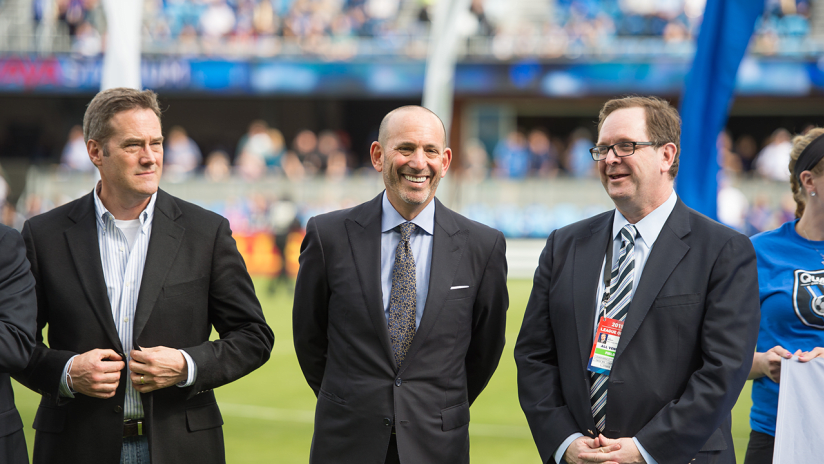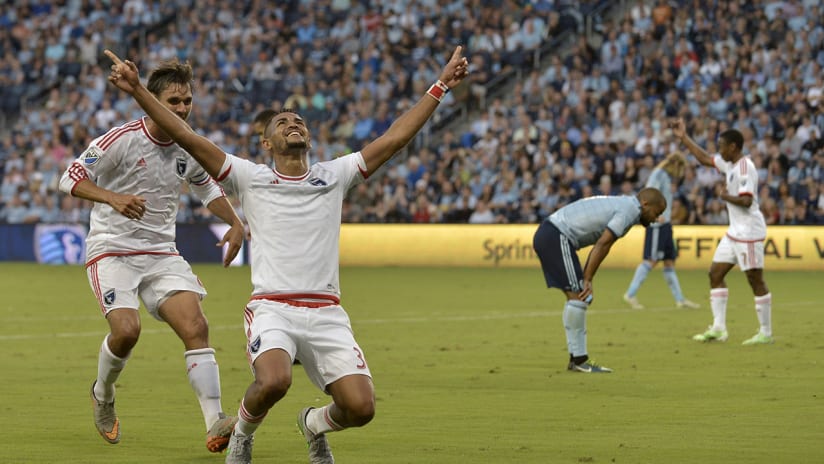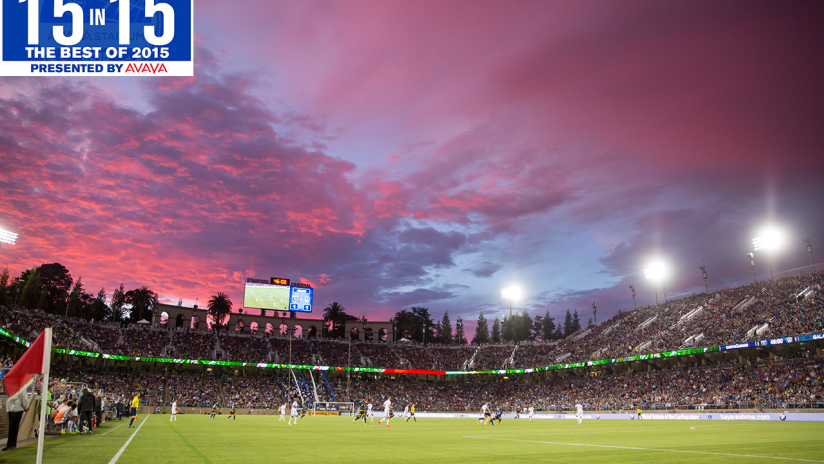SAN JOSE, Calif. – Major League Soccer today announced that nearly $37 million will be added to league-wide player compensation during the next two seasons, providing clubs the opportunity to sign more impact players in the middle of the roster and add young homegrown talent.
Each MLS club will receive an additional $800,000 in Targeted Allocation Money for the 2016 season and an additional $800,000 for the 2017 season. Targeted Allocation Money is used by clubs to add depth to their rosters by strategically investing in players that make more than the 2016 maximum budget charge of $457,500 (but who are not Designated Players). Unlike the Designated Player initiative, all MLS clubs are provided an equal amount of funding.
This investment expands the TAM program that was initially announced this summer when each club received $500,000. This resulted in an influx of talent including Montreal midfielder Johan Venegas, San Jose midfielder Anibal Godoy and Columbus defender Gastón Sauro, a key contributor in Crew SC’s run to the MLS Cup final. Including this original investment, the total Targeted Allocation Money is $42 million league-wide. For a complete list of 2015 summer transactions, click here.
“By injecting an additional $37 million into the system, our clubs will be able to strengthen the depth of their rosters by signing more high-quality players,” said MLS Deputy Commissioner Mark Abbott. “We saw immediate dividends this past season with the initial investment in Targeted Allocation Money, and our owners believe that additional spending -- especially for players who will impact the middle of our rosters -- will make MLS even more entertaining and compelling.”
In addition to the increase in Targeted Allocation Money, an incremental $125,000 per season will be made available to each club to sign Homegrown Players. More than 150 Homegrown Players have signed with MLS clubs since the league began its youth development initiative in 2007, and many more are expected to sign first team contracts in the coming years.
“Our academies are developing more first-team players every year, and the additional investment will provide more flexibility to our clubs to sign top young players,” said Todd Durbin, Executive Vice President for Players and Competition. “We have seen former academy players like Gyasi Zardes, Bill Hamid and Wil Trapp become leaders on their clubs, and we expect many more academy players of their caliber to sign with MLS clubs in the coming years.”
The additional Targeted Allocation Money must be committed within four transfer windows. As such, the 2016 TAM funds must be applied prior to the conclusion of the 2017 Secondary Transfer Window and the 2017 TAM funds prior to the conclusion of the 2018 Secondary Transfer Window. The use of the initial $500,000 of Targeted Allocation Money, which expires in 2019, will still follow the guidelines and timeline set forth in the CBA, outlined here.
Similar to general Allocation Money, Targeted Allocation Money may be used to sign new or re-sign existing players. In addition, Targeted Allocation Money may be traded.
Additional terms of the increase in Targeted Allocation Money include:
- Clubs may use a portion of or all of the available Targeted Allocation Money to convert a Designated Player to a non-Designated Player by buying down his salary budget charge to at or below the maximum salary budget charge. If converted during the Secondary Transfer Window, the Designated Player may earn at maximum $1.5 million on a prorated basis. If Targeted Allocation Money is used to free up a Designated Player slot, the club must simultaneously sign a new Designated Player at an investment equal to or greater than the player he is replacing.
- Clubs retain the flexibility to convert players bought down with Targeted Allocation Money into Designated Players if they have a free Designated Player slot.
- Targeted Allocation Money and general Allocation Money may not be used in combination when signing or re-signing a player, or when buying down the budget charge of a Designated Player. Either Targeted Allocation Money or general Allocation Money may be used on a player in a single season, not both.
- A Player must earn more than $457,500 per year (2016 maximum budget charge) to qualify for Targeted Allocation Money. The compensation ceiling for such players is set at $1,000,000 per year, unless amounts are applied midseason an existing Designated Player adjustment to Targeted Allocation. The minimum budget charge for a player compensated with Targeted Allocation Money is $150,000.




